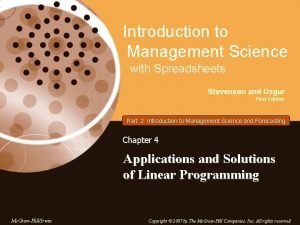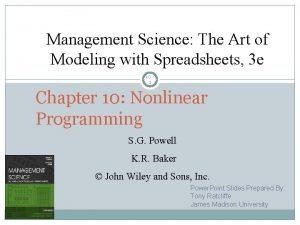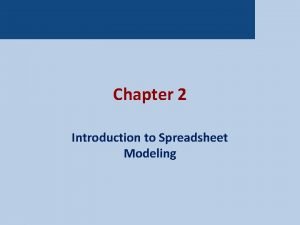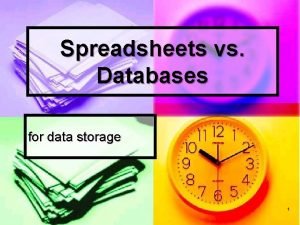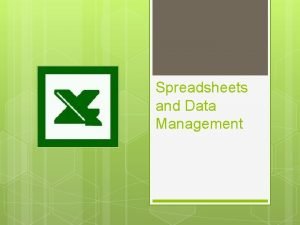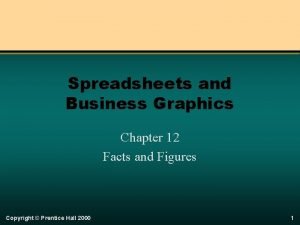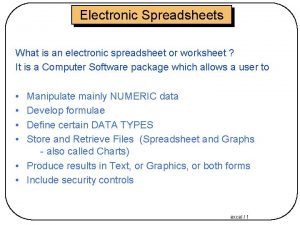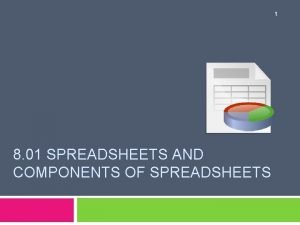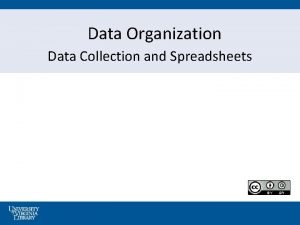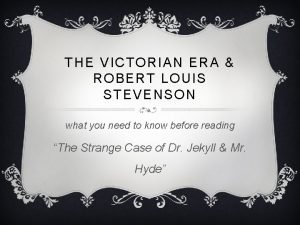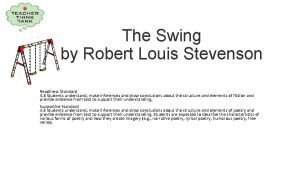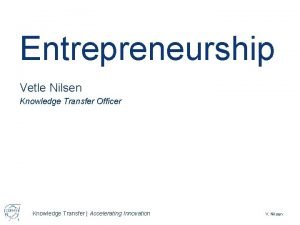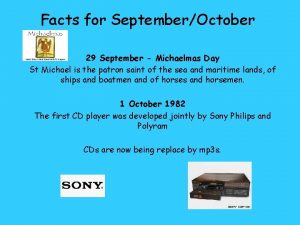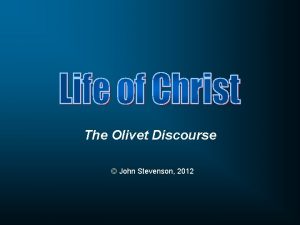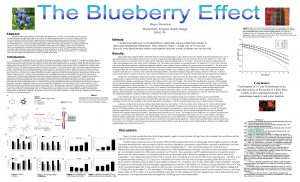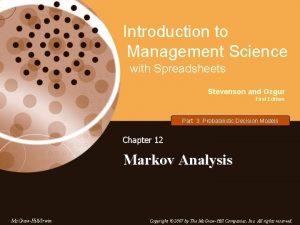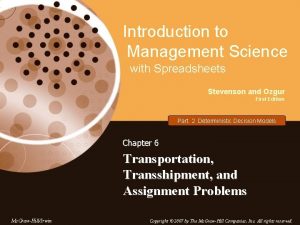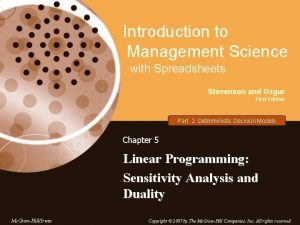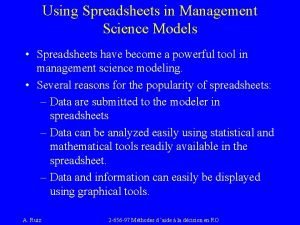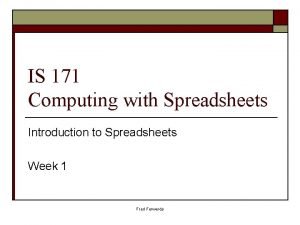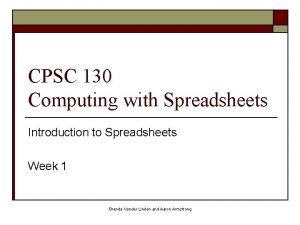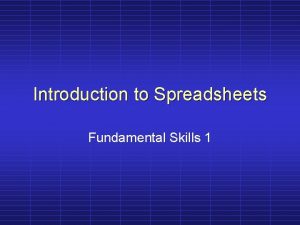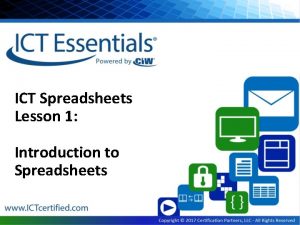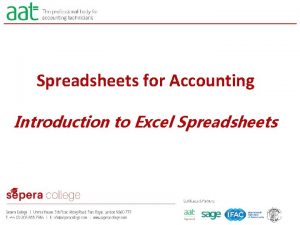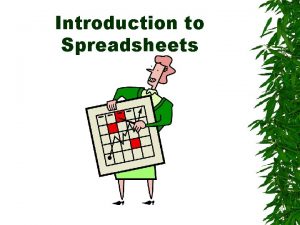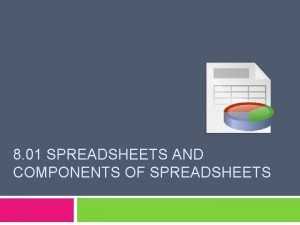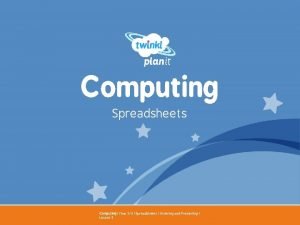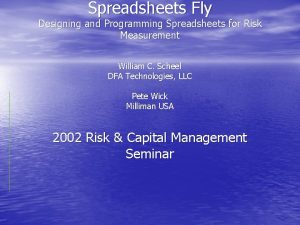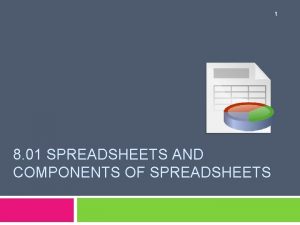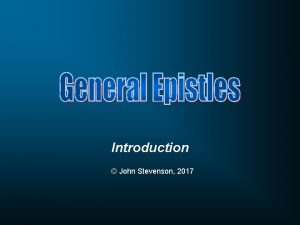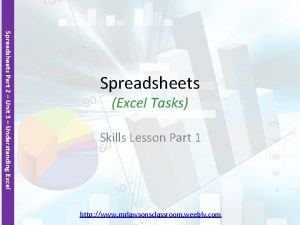Introduction to Management Science with Spreadsheets Stevenson and

































- Slides: 33

Introduction to Management Science with Spreadsheets Stevenson and Ozgur First Edition Part 3 Probabilistic Decision Models Chapter 14 Simulation Mc. Graw-Hill/Irwin Copyright © 2007 by The Mc. Graw-Hill Companies, Inc. All rights reserved.

Learning Objectives After completing this chapter, you should be able to: 1. Explain what the term simulation means and how simulation differs from analytical techniques. 2. Explain the difference between discrete and continuous simulations, between fixed-interval and next-event simulations, and between discrete and probabilistic simulations. 3. List and briefly describe the steps in simulation. 4. Use the Monte Carlo method to generate random numbers. 5. Conduct manual simulations using various distributions. Copyright © 2007 The Mc. Graw-Hill Companies. All rights reserved. Mc. Graw-Hill/Irwin 14– 2

Learning Objectives (cont’d) After completing this chapter, you should be able to: 6. Conduct simulation with Excel using various distributions. 7. Conduct simple waiting-line simulation using Excel. 8. Conduct inventory management simulation using Excel. 9. List the advantages and limitations of simulations. Copyright © 2007 The Mc. Graw-Hill Companies. All rights reserved. Mc. Graw-Hill/Irwin 14– 3

Simulation • Simulation – A descriptive tool for the study of the behavior of a system under various conditions. – The goal in simulation is to create a model that will reflect the behavior of some real-life system in order to be able to observe how it may behave when certain inputs or parameters are changed. – Unlike analytical techniques, it is not an optimizing technique. Copyright © 2007 The Mc. Graw-Hill Companies. All rights reserved. Mc. Graw-Hill/Irwin 14– 4

Types of Simulations • Discrete Simulations – Experimental situations in which outcome variables are discrete and are described by a count of the number of occurrences. • Continuous Simulations – Experimental situations in which the variable of interest is continuous in that it can assume both integer and noninteger values over a range of values that are measured rather than counted. Copyright © 2007 The Mc. Graw-Hill Companies. All rights reserved. Mc. Graw-Hill/Irwin 14– 5

Types of Simulations (cont’d) • Fixed-Interval Simulations – Experiments simulating the value of a variable over a given or fixed interval of time, distance or area. – Interest is centered on the accumulated value of a variable over a length of time or other interval. • Next-Event Simulations – Experiments focused on when something happens, or how much time is required to perform a task. – Interest is centered on an occurrence of an event and, perhaps, how much time or effort is required for the event. Copyright © 2007 The Mc. Graw-Hill Companies. All rights reserved. Mc. Graw-Hill/Irwin 14– 6

Types of Simulations (cont’d) • Deterministic Simulations – Cases in which a specific outcome is certain, given a set of inputs. • Probabilistic Simulations – Cases that involve random variables and, therefore, the exact outcome cannot be predicted with certainty, given a set of inputs. – Cases that incorporate some mechanism for mimicking random behavior in one or more variables. Copyright © 2007 The Mc. Graw-Hill Companies. All rights reserved. Mc. Graw-Hill/Irwin 14– 7

Figure 14– 1 Steps in Simulation Define the problem Set objectives Develop model Gather data Validate model Design experiments Run simulations Analyze and interpret results Copyright © 2007 The Mc. Graw-Hill Companies. All rights reserved. Mc. Graw-Hill/Irwin 14– 8

The Monte Carlo Method • Monte Carlo Simulation – A commonly used approach for achieving randomness that derives its name from its similarity to games of chance. • Characteristics of random numbers – All numbers are equally likely. – No patterns appear in sequences of numbers. Copyright © 2007 The Mc. Graw-Hill Companies. All rights reserved. Mc. Graw-Hill/Irwin 14– 9

Table 14– 1 Random Numbers Copyright © 2007 The Mc. Graw-Hill Companies. All rights reserved. Mc. Graw-Hill/Irwin 14– 10

Table 14– 2 Simulating a Coin Toss Copyright © 2007 The Mc. Graw-Hill Companies. All rights reserved. Mc. Graw-Hill/Irwin 14– 11

Table 14– 3 Assigning Random Numbers for the Replacement Parts Example Copyright © 2007 The Mc. Graw-Hill Companies. All rights reserved. Mc. Graw-Hill/Irwin 14– 12

Table 14– 4 Simulation of Replacement Parts Usage Copyright © 2007 The Mc. Graw-Hill Companies. All rights reserved. Mc. Graw-Hill/Irwin 14– 13

Figure 14– 2 Conversion of a Random Number to a Uniform Distribution Copyright © 2007 The Mc. Graw-Hill Companies. All rights reserved. Mc. Graw-Hill/Irwin 14– 14

Figure 14– 3 Simulating Exponentially Distributed Random Numbers Copyright © 2007 The Mc. Graw-Hill Companies. All rights reserved. Mc. Graw-Hill/Irwin 14– 15

Table 14– 5 Normally Distributed Random Numbers Copyright © 2007 The Mc. Graw-Hill Companies. All rights reserved. Mc. Graw-Hill/Irwin 14– 16

Figure 14– 4 Simulation Using Normally Distributed Random Numbers Copyright © 2007 The Mc. Graw-Hill Companies. All rights reserved. Mc. Graw-Hill/Irwin 14– 17

Figure 14– 5 Two Common Types of Multiple-Variable Simulations Copyright © 2007 The Mc. Graw-Hill Companies. All rights reserved. Mc. Graw-Hill/Irwin 14– 18

Exhibit 14 -1 60 Random Numbers Generated by the RAND() Function Copyright © 2007 The Mc. Graw-Hill Companies. All rights reserved. Mc. Graw-Hill/Irwin 14– 19

Exhibit 14 -2 200 Random Numbers Generated Between 0 and 100 Copyright © 2007 The Mc. Graw-Hill Companies. All rights reserved. Mc. Graw-Hill/Irwin 14– 20

Exhibit 14– 3 200 Uniform Discrete Random Numbers Generated Between 20 and 100 Copyright © 2007 The Mc. Graw-Hill Companies. All rights reserved. Mc. Graw-Hill/Irwin 14– 21

Exhibit 14– 4 Histogram Specification Screen Copyright © 2007 The Mc. Graw-Hill Companies. All rights reserved. Mc. Graw-Hill/Irwin 14– 22

Exhibit 14– 5 Histogram of the Values in Exhibit 14 -3 Copyright © 2007 The Mc. Graw-Hill Companies. All rights reserved. Mc. Graw-Hill/Irwin 14– 23

Exhibit 14– 6 Excel Worksheet and the Results Associated with the Andersen Quick Oil and Lube Example Copyright © 2007 The Mc. Graw-Hill Companies. All rights reserved. Mc. Graw-Hill/Irwin 14– 24

Exhibit 14– 7 The Excel Worksheet for the Simulation of the Gas Station Waiting-Line Problem Copyright © 2007 The Mc. Graw-Hill Companies. All rights reserved. Mc. Graw-Hill/Irwin 14– 25

Exhibit 14– 8 Excel Worksheet and the Results for the Golden Eagle Plumbing Company Inventory Problem Where Quantity =12, ROP =5 Copyright © 2007 The Mc. Graw-Hill Companies. All rights reserved. Mc. Graw-Hill/Irwin 14– 26

Exhibit 14– 9 Excel Worksheet and the Results for the Golden Eagle Plumbing Company Inventory Problem Where Quantity = 10, ROP = 7 Copyright © 2007 The Mc. Graw-Hill Companies. All rights reserved. Mc. Graw-Hill/Irwin 14– 27

Exhibit 14– 10 Excel Worksheet and the Results Associated with Solved Problem 1 (Fire Station) Copyright © 2007 The Mc. Graw-Hill Companies. All rights reserved. Mc. Graw-Hill/Irwin 14– 28

Exhibit 14– 11 Excel Worksheet and the Results Associated with Solved Problem 2 Copyright © 2007 The Mc. Graw-Hill Companies. All rights reserved. Mc. Graw-Hill/Irwin 14– 29

Exhibit 14– 12 Excel Worksheet and the Results Associated with Solved Problem 3 (Emergency Repairs) Copyright © 2007 The Mc. Graw-Hill Companies. All rights reserved. Mc. Graw-Hill/Irwin 14– 30

Exhibit 14– 13 Excel Worksheet and the Results Associated with Solved Problem 3 (Emergency Repairs) Copyright © 2007 The Mc. Graw-Hill Companies. All rights reserved. Mc. Graw-Hill/Irwin 14– 31

Advantages of Simulation 1. It is particularly well-suited for problems that are difficult or impossible to solve mathematically. 2. It allows an analyst or decision maker to experiment with system behavior in a controlled environment instead of in a real-life setting that has inherent risks. 3. It enables a decision maker to compress time in order to evaluate the long-term effects of various alternatives. 4. It can serve as a mode for training decision makers by enabling them to observe the behavior of a system under different conditions. Copyright © 2007 The Mc. Graw-Hill Companies. All rights reserved. Mc. Graw-Hill/Irwin 14– 32

Limitations of Simulation • Probabilistic simulation results are approximations, rather than optimal solutions. • Good simulations can be costly and time-consuming to develop properly; they also can be time-consuming to run, especially in cases in which a large number of trials are indicated. • A certain amount of expertise is required in order to design a good simulation, and this may not be readily available. • Analytical techniques may be available that can provide better answers to problems. Copyright © 2007 The Mc. Graw-Hill Companies. All rights reserved. Mc. Graw-Hill/Irwin 14– 33
 Introduction to management science with spreadsheets
Introduction to management science with spreadsheets Management science the art of modeling with spreadsheets
Management science the art of modeling with spreadsheets What is a spreadsheet model
What is a spreadsheet model Spreadsheet vs database
Spreadsheet vs database Spreadsheets
Spreadsheets Facts about spreadsheets
Facts about spreadsheets What is electronic spreadsheet
What is electronic spreadsheet What are the uses of spreadsheet
What are the uses of spreadsheet A collection of spreadsheets
A collection of spreadsheets Extra credit
Extra credit What is your favourite subject?
What is your favourite subject? Stevenson and black 2007 inclusion spectrum
Stevenson and black 2007 inclusion spectrum Zechariah stevenson
Zechariah stevenson Zechariah 4:8
Zechariah 4:8 Robert louis stevenson victorian era
Robert louis stevenson victorian era The swing by robert louis stevenson
The swing by robert louis stevenson Insuficiencia cardiaca clasificacion stevenson
Insuficiencia cardiaca clasificacion stevenson Tort and contract difference
Tort and contract difference Howard h stevenson
Howard h stevenson Donoghue v stevenson case summary
Donoghue v stevenson case summary Donoghue v stevenson case summary
Donoghue v stevenson case summary I am zealous
I am zealous Zealous
Zealous Zechariah stevenson sentence
Zechariah stevenson sentence Building a life howard stevenson
Building a life howard stevenson Ilona stevenson
Ilona stevenson Matthew 24 35
Matthew 24 35 Valerie stevenson
Valerie stevenson Dr john stevenson
Dr john stevenson Peter stevenson compassion in world farming
Peter stevenson compassion in world farming Stevenson screen unit of measurement
Stevenson screen unit of measurement Maeve stevenson
Maeve stevenson Moho scope
Moho scope Maeve stevenson
Maeve stevenson
